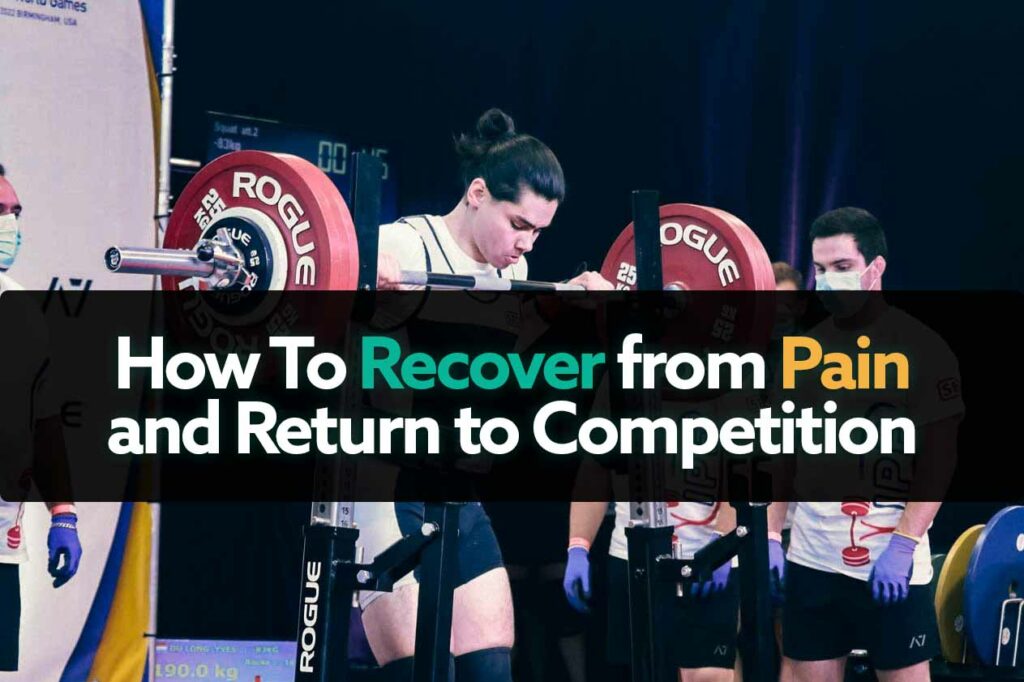The first step in coaching any athlete is to understand the material conditions we are operating with.
In 2020 I began working with a powerlifter named Yves. When we started, he was experiencing frustrating chronic pec pain. Though, the pain wasn’t severe, it was often on his mind.
He identifies as a powerlifter and he was unable to comfortably perform a movement that’s 1/3 of the competition. Luckily, he remained optimistic and was confident in both me and the process. On our athletic development call in December of 2020, he noted that his primary goals were “To be happy with the process, focus on his progression, become less prone to injury, and lift for longevity.”
When he told me this, I realized that I needed to learn more about his situation and determine which variables increased or decreased his pain experience. Additionally, this meant that in order to adapt to his needs, I would need to frame our conversations and my observations around individual progression, highlight moments of pain free lifting, and develop training that encourages anti-fragility and strength.
Initially, he told me that his pain increased at higher intensities, but that he could train bench multiple times per week without making things worse. Though, no matter what he did, he could feel some level of tenderness with any barbell benching.
What We Did
At first, we kept things simple; we planned to bench 2-3x per week for sets of 4-10 @ RPE 5-7. This was effective for a while to help him continue benching without making the pain worse. However, after about 3 months we didn’t notice that his pain was reducing either.
So, we went back to the drawing board and we discussed which exercises, rep ranges, and intensities made his pain feel better, worse, or had no effect.
“These are the critical questions to ask when rehabbing any muscle to return to high-level performance.”
However, there is one variable that we experimented with the most- exposure frequency to the barbell bench press and other bench variations such as the dumbbell bench press or incline bench press. Interestingly, Yves could tolerate slightly higher levels of frequency for the DB bench and DB Incline bench variations than he could for the barbell bench press.
Furthermore, he could also tolerate higher relative intensities for the DB and DB Incline bench variations. So, we decided to temporarily remove the competition bench press from his program, to build a new and healthy relationship between his pec/shoulder muscles and the pressing movements in his program.
Yves’ excitement and motivation played a huge role in his ability to bench pain-free again. As he got stronger on the dumbbell variations, he shifted his mental focus and excitement towards those movements instead of the competition bench press. After a few months, Yves got so strong on the DB variations that in order to complete his sessions, he’d need to take a 5 minute walk to another section of his training facility.
After this, we noticed a big shift in both his energy and mindset in regard to benching. He started to feel more competent with a pressing movement that didn’t cause pain nor increased pain in any way. This was a huge psychological motivator to allow him to believe in a pain free future.
“Pain is not simply about the present experience, but how that present experience may impact their future goals.”
We re-introduced his competition bench press frequency to 1x per week and started him with working up to x1 @6 followed by an Incline DB Press and an overhead DB press with the other session including a flat DB bench and other DB Bench variations. Once we dialed in the right frequency, intensities, rep ranges, and exercise variation, we started noticing less and less pain on the bench variations over the course of the year.
As of last month, Yves has been benching over 100kg for the first time since we started working together, and this time- completely pain-free!
Yves’ story is one of the countless examples of why understanding pain science and load management as a powerlifting coach is absolutely critical.
Reflection
Since writing this post, Yves has intentions to sign up for his first powerlifting competition of 2022 (once registration opens). We have learned a lot about how to mitigate pain and how to increase his strength for not only his bench press, but the squat and deadlift as well.
However, we must stay vigilant as we develop plans for the future. Pain is not something that can be removed from the body like a scab. It’s more like the weather. Some days it’s sunny and beautiful, other days it is dark and rainy and you don’t even want to go outside.
We must continue to use the process based tools to critically analyze his future progress and make the necessary adjustments to continue to push his bench press forward. That said, successful rehabilitation enables progressive optimism and proves that the lifter can succeed despite experiencing adversity in their training journey.
Hopefully this article provides insight on the importance of understanding the material conditions of the lifter, adapting to the reality of the situation as it unfolds, and the necessity for continuous reflection after the plan is implemented and deemed successful.
Leveraging this new outlook on training can be an incredible tool as we help our athletes build strength for life.

